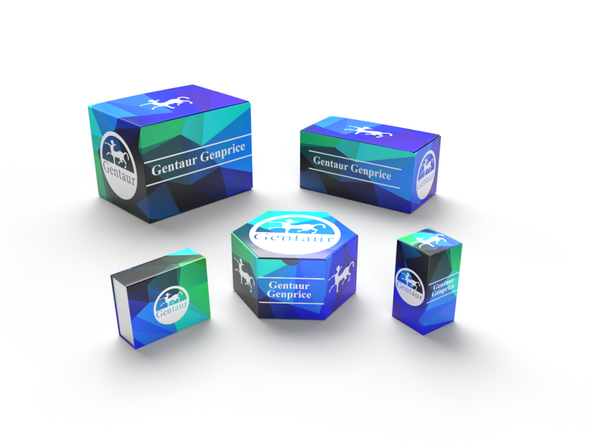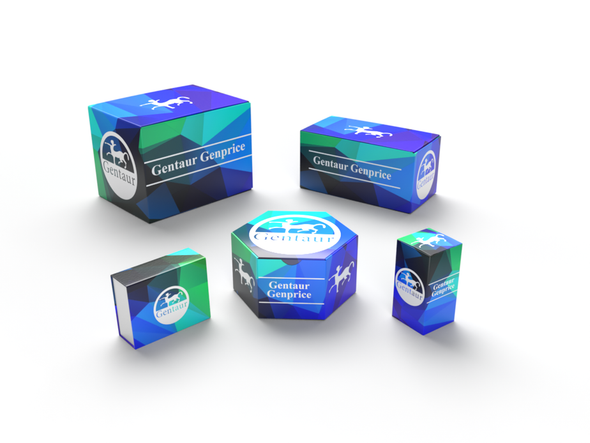Description
NOVA1 Antibody | 29-288 | Gentaur UK, US & Europe Distribution
Host: Rabbit
Reactivity: Human, Mouse, Rat
Homology: N/A
Immunogen: Antibody produced in rabbits immunized with a synthetic peptide corresponding a region of human NOVA1.
Research Area: Cancer
Tested Application: E, WB
Application: NOVA1 antibody can be used for detection of NOVA1 by ELISA at 1:312500. NOVA1 antibody can be used for detection of NOVA1 by western blot at 0.5 μg/mL, and HRP conjugated secondary antibody should be diluted 1:50, 000 - 100, 000.
Specificiy: N/A
Positive Control 1: Cat. No. 1201 - HeLa Cell Lysate
Positive Control 2: N/A
Positive Control 3: N/A
Positive Control 4: N/A
Positive Control 5: N/A
Positive Control 6: N/A
Molecular Weight: 52 kDa
Validation: N/A
Isoform: N/A
Purification: Antibody is purified by peptide affinity chromatography method.
Clonality: Polyclonal
Clone: N/A
Isotype: N/A
Conjugate: Unconjugated
Physical State: Liquid
Buffer: Purified antibody supplied in 1x PBS buffer with 0.09% (w/v) sodium azide and 2% sucrose.
Concentration: batch dependent
Storage Condition: For short periods of storage (days) store at 4˚C. For longer periods of storage, store NOVA1 antibody at -20˚C. As with any antibody avoid repeat freeze-thaw cycles.
Alternate Name: NOVA1, Nova-1
User Note: Optimal dilutions for each application to be determined by the researcher.
BACKGROUND: NOVA1 is a neuron-specific RNA-binding protein, a member of the Nova family of paraneoplastic disease antigens, that is recognized and inhibited by paraneoplastic antibodies. These antibodies are found in the sera of patients with paraneoplastic opsoclonus-ataxia, breast cancer, and small cell lung cancer.This gene encodes a neuron-specific RNA-binding protein, a member of the Nova family of paraneoplastic disease antigens, that is recognized and inhibited by paraneoplastic antibodies. These antibodies are found in the sera of patients with paraneoplastic opsoclonus-ataxia, breast cancer, and small cell lung cancer. Alternatively spliced transcripts encoding distinct isoforms have been described.









![NOVA1 Antibody (Center) [AMM06762G] NOVA1 Antibody (Center) [AMM06762G]](https://cdn11.bigcommerce.com/s-1rdwiq712m/images/stencil/590x590/products/60505/60809/gentaur-genprice__26005.1661610467__29809.1661628092__75433.1661676199__77988.1661684280__64362.1661692443__96348.1661863234.png?c=1)
![NOVA1 Antibody (Center) [AMM06761G] NOVA1 Antibody (Center) [AMM06761G]](https://cdn11.bigcommerce.com/s-1rdwiq712m/images/stencil/590x590/products/60517/60821/gentaur-genprice__26005.1661610467__29809.1661628092__75433.1661676199__77988.1661684280__64362.1661692443__32093.1661863247.png?c=1)